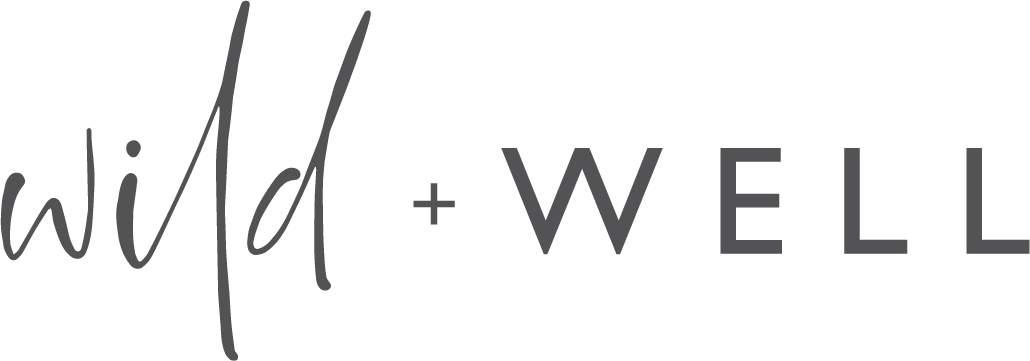What Items to Source for a Non-Toxic Baby Registry (Plus What Postpartum Essentials to Add to List for Mama)
When working with prenatal and postpartum clients, one of the big questions that comes up is how to reduce the toxic-load for our little ones. And with that comes the question around non-toxic versus conventional items for baby. Preparing for a baby is so exciting but can also be very overwhelming. With so many products on the market and a million different opinions, making a baby registry can become stressful. When we had our little one, Colter, last year, I heavily researched the items we decided to source for him.
The choices we make for our children are very impactful since babies’ neurological development the first few years can is impacted heavily by the chemical exposure around them. They breathe more air per pound than adults, and they have thinner blood-brain barriers, which allows their developing brains to be exposed to more chemicals. Each time we pick an everyday product that’s safer than another, we are reducing our baby’s overall exposures to toxic chemicals that can undermine their health in the short and long term. We used babylist.com and really liked that you could register at any website or store.
An important note here is that these non-toxic and organic items can be expensive! However, it doesn’t need to be that way and break your budget. I sourced several of these items second-hand and saved $$$$. It made it easier to reduce waste and also reuse.
What to Avoid
Synthetic Flame Retardants: These chemicals can be found in mattresses, car seats, strollers, and even on clothes. Many of these chemicals have been linked to serious health problems such as cancer, reduced fertility, hormonal problems, and developmental issues in children including reduced IQ and behavioral problems. This is the biggest problem for sourcing car seats and mattresses!
Plastics: We have been working to avoid ALL plastics in our home - PVC, phthalates, cadmium, lead, BPA, polypropylene, and more that most plastic toys are made from. Plastic is tough to avoid in our world, so opt for PVC-free and BPA-free at a minimum and consider how the item is going to be used. If it’s going to end up in your child’s mouth, try to source as natural as possible (wood is preferable).
VOC’s (Volatile Organic Compounds): These are compounds that easily turn into vapors and pollute the air we breathe, and lots of VOC’s are present in the products we use in our homes. Examples are the paint on our walls, our furniture, carpeting, rugs, toys, etc.
What to Look For
Organic: Choosing organic isn’t always possible, but it’s something we strive for if we’re able to. This is important for us because, for example, cotton growers often use hazardous pesticides and more chemical pesticides are used for cotton than for any other crop. These pesticides can prevent individual nerve cells from communicating with one another which can, in turn, interfere with every function within your body. We do what we can to decrease our own toxic loads, but definitely want to give our baby a healthy environment with less toxins for them to adapt
Solid Woods: You may not be able to find or afford a product that has all the certifications to make it nontoxic, but if it’s made out of 100% beechwood, for example, that’s significantly better and naturally less toxic.
Natural Fibers: Up to 8,000 chemicals can be used in the production and processing of textiles — for dyeing, treating, printing and finishing. We love fabrics that breathe like cotton and linen.
What Do These Certifications Mean?
Greenguard Gold Certification: This certification means that products have been rigorously tested and scientifically proven to have low levels of chemical emissions (the VOC’s talked about above). This is especially important when sourcing furniture for your nursery.
GOTS Certified Organic Cotton and Wool: “The Global Organic Textile Standard (GOTS) is the worldwide leading textile processing standard for organic fibres, including ecological and social criteria, backed up by independent certification of the entire textile supply chain.” You can read more about this certification here.
Standard 100 by Oeko-Tex: “If a textile article carries the STANDARD 100 label, you can be certain that every component of this article, i.e. every thread, button and other accessories, has been tested for harmful substances and that the article therefore is harmless in human ecological terms.” You can read more about Okeo-Tex here. It’s important to source GOTS certified organic cotton or Standard 100 by Oeko-Tex for baby textiles, like clothing, burp cloths, blankets, etc.
My Favorite Items to Source
Gear
Car Seats: UppaBaby Mesa (infants), Clek (convertible), Nuna Rava (convertible)
*UppaBaby offers free virtual safety checks for all carseats!




